Autism and Schizophrenia: Understanding the Link and How to Differentiate
Autism Spectrum Disorder (ASD) and Schizophrenia are two distinct mental health conditions that can sometimes be difficult to differentiate. While they share some similarities, such as social difficulties and sensory sensitivities, they also have distinct differences in their symptoms and causes. In this article, we’ll explore the symptoms of autism and schizophrenia, how they can co-exist, and how to differentiate between the two.
What is Autism Spectrum Disorder (ASD)?
ASD is a developmental disorder that affects communication, social interaction, and behavior. According to the Centers for Disease Control and Prevention (CDC), approximately 1 in 54 children in the United States has been diagnosed with ASD. Symptoms of autism can include difficulty with social interactions, repetitive behaviors or routines, sensory sensitivities, delayed language development, and difficulty with imaginative play or pretending.
What is Schizophrenia?
Schizophrenia, on the other hand, is a chronic mental health condition that affects how a person thinks, feels, and behaves. The CDC reports that approximately 1% of the population worldwide has schizophrenia. Symptoms of schizophrenia can include delusions, hallucinations, disorganized speech or behavior, difficulty with thinking or concentration, and a lack of motivation or interest in activities.
The Relationship Between Autism and Schizophrenia: What Science Tells Us
While autism and schizophrenia are two distinct conditions, they can sometimes co-exist. In fact, research has shown that individuals with autism are at a higher risk of developing schizophrenia than the general population. This may be due to shared genetic or environmental factors that contribute to both conditions.
Co-Occurrence of Autism and Schizophrenia
The co-occurrence of autism and schizophrenia can be challenging to diagnose and treat. Some individuals may exhibit symptoms of both conditions, making it difficult to differentiate between the two. Additionally, individuals with both conditions may require specialized treatment and management to address their unique needs.
According to a study published in the Journal of Autism and Developmental Disorders, autism spectrum disorders (ASD) and schizophrenia spectrum disorders (SSD) share clinical and genetic components that have long been recognized. The two disorders co-occur more frequently than would be predicted by their respective prevalence, suggesting that a complex, multifactor association is involved [link to paper]. Another study published in the Journal of Psychiatric Research found that the prevalence of schizophrenia is 3.6 times as common in individuals with autism as in controls [link to the paper].
However, it’s important to note that the exact prevalence of co-occurrence between autism and schizophrenia is not well-established, and more research is needed to fully understand the relationship between these two conditions.
Differentiating Between Autism and Schizophrenia
Differentiating between autism and schizophrenia can be challenging, as some symptoms can overlap. However, there are some key differences to look out for. Individuals with autism typically have difficulty with social interactions and communication from an early age, while symptoms of schizophrenia typically develop in late adolescence or early adulthood. Additionally, individuals with schizophrenia may experience delusions or hallucinations, which are not typically seen in autism.
| Symptom | Schizophrenia | Autism |
|---|---|---|
| Onset | Late adolescence or early adulthood | Early childhood |
| Communication | Difficulty with speech and language | Difficulty with social communication |
| Social Interaction | Difficulty with social interactions and relationships | Difficulty with social interactions and relationships |
| Repetitive Behaviors | Not typically present | Often present |
| Sensory Sensitivities | Not typically present | Often present |
| Delusions or Hallucinations | Often present | Not typically present |
| Cognitive Functioning | Impaired | May be impaired in some areas, such as executive functioning |
| Emotional Expression | Flat or inappropriate affect | Difficulty with recognizing or expressing emotions |
| Motor Functioning | Abnormal movements or postures | May have difficulty with coordination or motor planning |
| Self-Injury | May engage in self-harm or suicide attempts | May engage in self-injury, such as head-banging |
| Comorbidity | Substance abuse, anxiety, depression | ADHD, anxiety, depression |
Schizophrenia and Autism: Unique Symptoms and Key Differences
Schizophrenia and autism are two distinct neurodevelopmental and psychiatric conditions that can significantly impact an individual’s life. While they share some overlapping features, such as social communication challenges and sensory sensitivities, they are fundamentally different in their causes, symptoms, and treatment approaches. Understanding the unique symptoms of each condition is crucial for accurate diagnosis, effective intervention, and providing appropriate support.
In the next part of the blog, we will explore the five symptoms unique to schizophrenia and the five symptoms unique to autism, highlighting their distinct characteristics and how they manifest in individuals. We will also discuss the importance of recognizing these differences and addressing the unique needs of individuals with each condition.
5 Symptoms Unique to Schizophrenia
Schizophrenia is a chronic and severe mental health disorder that affects how a person thinks, feels, and behaves. It is characterized by a range of symptoms that can be divided into positive, negative, and cognitive categories. Below are five symptoms that are particularly unique to schizophrenia:
1. Delusions
Delusions are false beliefs that are not based in reality and are firmly held despite evidence to the contrary. These beliefs can take various forms, including:
- Persecutory Delusions: Believing that someone is trying to harm or conspire against you.
- Grandiose Delusions: Believing that you have special powers, fame, or a unique mission.
- Referential Delusions: Believing that random events or objects have a special meaning directed at you (e.g., thinking a song on the radio is sending you a message).
Delusions are a hallmark symptom of schizophrenia and can significantly impact an individual’s perception of reality and behavior.
2. Hallucinations
Hallucinations are sensory experiences that occur without any external stimulus. The most common type in schizophrenia is auditory hallucinations, such as hearing voices that others cannot hear. These voices may be critical, commanding, or conversational. Less commonly, individuals may experience visual hallucinations (seeing things) or tactile hallucinations (feeling things on the skin).
Hallucinations can be distressing and may lead to confusion, fear, or erratic behavior.
3. Disorganized Speech
Disorganized speech, also known as formal thought disorder, is a symptom where individuals have difficulty organizing their thoughts and expressing them coherently. This can manifest as:
- Tangentiality: Going off-topic and not returning to the original point.
- Word Salad: Speaking in a jumbled or incoherent manner.
- Loose Associations: Jumping between unrelated ideas without logical connections.
Disorganized speech can make communication challenging and may reflect underlying thought disturbances.
4. Abnormal Motor Behavior
Abnormal motor behavior in schizophrenia can range from catatonia (a state of unresponsiveness or immobility) to agitation (excessive, purposeless movement). Other examples include:
- Repetitive Movements: Engaging in repetitive motions, such as rocking or pacing.
- Strange Postures: Holding unusual or rigid body positions for extended periods.
- Neglecting Self-Care: Failing to perform basic daily activities, such as bathing or eating.
These behaviors can be disruptive and may require intervention to ensure the individual’s safety and well-being.
5. Negative Symptoms
Negative symptoms refer to a reduction or absence of normal emotional and behavioral functioning. These include:
- Avolition: Lack of motivation or ability to initiate and sustain goal-directed activities.
- Flat Affect: Reduced emotional expression, such as a lack of facial expressions or vocal tone.
- Anhedonia: Inability to experience pleasure from activities that are typically enjoyable.
- Alogia: Reduced speech output or difficulty speaking.
Negative symptoms can significantly impair an individual’s ability to function in daily life and maintain relationships.
5 Symptoms Unique to Autism
Autism Spectrum Disorder (ASD) is a neurodevelopmental condition characterized by challenges in social communication, restricted interests, and repetitive behaviors. While autism is highly variable, certain symptoms are particularly unique to the condition. Below are five key symptoms:
1. Repetitive Behaviors
Repetitive behaviors are a core feature of autism and can take many forms, including:
- Stereotyped Movements: Repetitive motions, such as hand-flapping, rocking, or spinning.
- Ritualistic Behaviors: Insistence on following specific routines or rituals, such as lining up toys or eating the same food every day.
- Echolalia: Repeating words or phrases, either immediately or after a delay.
These behaviors often serve as a way to self-regulate or cope with sensory overload.
2. Sensory Sensitivities
Individuals with autism often experience heightened or reduced sensitivity to sensory input. This can include:
- Hypersensitivity: Overreacting to sensory stimuli, such as being bothered by loud noises, bright lights, or certain textures.
- Hyposensitivity: Underreacting to sensory stimuli, such as not noticing pain or temperature changes.
- Sensory Seeking: Actively seeking out sensory input, such as touching objects or making loud noises.
Sensory sensitivities can significantly impact daily functioning and may lead to avoidance or meltdowns.
3. Difficulty with Social Communication
Social communication challenges are a hallmark of autism and can manifest as:
- Difficulty with Nonverbal Communication: Struggling to interpret or use gestures, facial expressions, or tone of voice.
- Literal Understanding: Taking language literally and struggling with sarcasm, idioms, or abstract concepts.
- Difficulty with Reciprocity: Challenges in back-and-forth conversations or sharing interests with others.
These difficulties can make social interactions challenging and may lead to feelings of isolation.
4. Difficulty with Change
Individuals with autism often have a strong preference for routine and predictability. Changes in routine or unexpected events can cause significant distress, leading to:
- Anxiety or Meltdowns: Emotional outbursts or shutdowns in response to changes.
- Rigid Thinking: Difficulty adapting to new situations or considering alternative perspectives.
- Resistance to Transitions: Struggling to move from one activity or environment to another.
Providing structure and advance notice of changes can help reduce anxiety.
5. Intellectual or Developmental Differences
Autism is often associated with differences in intellectual or developmental functioning, such as:
- Delayed Language Development: Some individuals may have delayed speech or require alternative communication methods.
- Uneven Skill Development: Strengths in specific areas (e.g., math, music) alongside challenges in others (e.g., social skills, executive functioning).
- Executive Functioning Challenges: Difficulties with planning, organization, and time management.
These differences highlight the importance of individualized support and accommodations.
Key Differences Between Schizophrenia and Autism
While schizophrenia and autism share some overlapping features, such as social communication challenges and sensory sensitivities, they are distinct conditions with unique symptoms and trajectories. Key differences include:
- Onset: Autism is typically present from early childhood, while schizophrenia usually emerges in late adolescence or early adulthood.
- Core Symptoms: Schizophrenia is characterized by psychosis (delusions, hallucinations), while autism is defined by social communication challenges and repetitive behaviors.
- Prognosis: Autism is a lifelong condition, while schizophrenia often involves episodic symptoms that can be managed with treatment.
Understanding the unique symptoms of schizophrenia and autism is essential for accurate diagnosis, effective treatment, and providing appropriate support. While both conditions can present significant challenges, they also come with unique strengths and opportunities for growth. By recognizing the distinct characteristics of each condition, we can better support individuals in achieving their full potential and improving their quality of life. Whether you are a caregiver, educator, or healthcare professional, taking the time to understand these differences is a crucial step toward fostering empathy, inclusion, and effective care.
Treatment and Management of Autism and Schizophrenia: Best Practices
If you or a loved one is experiencing symptoms of autism or schizophrenia, it’s important to seek professional help. A mental health professional can provide a diagnosis and develop a treatment plan that is tailored to your specific needs. Treatment for autism may include behavioral therapy, speech therapy, and medication, while treatment for schizophrenia may include medication, therapy, and support services.
In conclusion, autism and schizophrenia are two distinct mental health conditions that share some similarities but also have distinct differences in their symptoms and causes. While they can sometimes co-exist, it’s important to differentiate between the two to ensure that individuals receive the appropriate treatment and support. If you or a loved one is experiencing symptoms of autism or schizophrenia, seek professional help to get a diagnosis and develop a treatment plan that is tailored to your specific needs.



